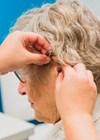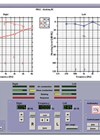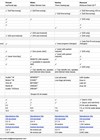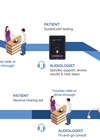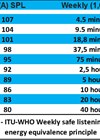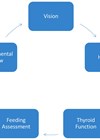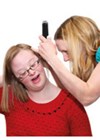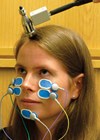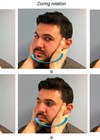Audiology features
Innovating around access to hearing services during the pandemic
COVID-19 has also presented its challenges to hearing healthcare providers and to the industry and, similarly, called for innovation and creativity. Dr Bromwich describes how these sectors are rising to the challenge. The reality of COVID-19 has been a challenging...
Moving forward for better communication for the Deaf and hard of hearing – Wavefront Centre
Now more than ever, guaranteeing accessibility and inclusion is a vital need for people of all abilities. The Wavefront Centre for Communication Accessibility in Vancouver, BC, is a model on to how to effectively address these issues and serve the...
In conversation with Jeff Small and Navid Shahnaz
The impact of COVID-19 has been felt on all levels of society and deeply affected our lives. It has challenged us to find new ways of carrying on with our activities at home, work, and school. Jeff Small, Director and...
Global audiology during COVID-19
The COVID-19 pandemic has affected, and in some areas, put a complete hold on, audiology practice around the world. In April 2020, during the peak of the pandemic for many regions, our audiology Global Ambassadors provided their reports from their...
Remote care apps: comparing the options
With much of the world in full or partial lockdown and social-distancing measures in full swing, the COVID-19 crisis has sparked renewed interest in remote teleaudiology services. Modern teleaudiology platforms, now offered by all major hearing aid brands, offer audiologists...
Making audiology work during COVID-19 and beyond
‘New normal’ is another phrase that has become synonymous with this pandemic. In this article, consideration for ‘low-touch’ and ‘no touch’ audiological pathways are described for adoption as the ‘new normal’ for hearing healthcare. The COVID-19 crisis has ushered in...
Redeployment of audiologists during COVID-19
As the demand on intensive therapy units in the NHS increased, volunteers from the audiology profession stepped in to support colleagues. Here, they share their experiences of caring on the frontline. Redefining normal: from outpatients to the ICU By Emilee...
Standards for Safe Listening – how they align and how some differ
The ‘Make Listening Safe workgroup’ is an initiative of The World Health Organization (WHO) in the framework of the World Hearing Forum and is committed to creating a world where nobody’s hearing is put in danger due to unsafe listening....
Multidisciplinary approach to managing individuals with trisomy 21
Michelle Chung and Narad Mathura outline the Down syndrome one-stop clinic; a multidisciplinary clinic introduced at the Children & Young Persons Audiology Centre (CYPAC) at Guys and St Thomas’ NHS Foundation Trust for children and young people with Down syndrome....
MDT clinics for adults with learning disabilities and hearing loss
Healthcare providers can have limitations and challenges providing optimum care for patients with intellectual disabilities. Siobhan Brennan and Susanna Goodhart highlight key professionals and carers who may be instrumental when trying to deliver good management and care along with other...
Recent changes in vestibular science and assessment
Clinical assessment of the dizzy or imbalanced patient is all about the patient’s history. History, history, history. But what about puzzling cases when we feel we need more information? Sally Rosengren gives us a rundown of the vestibular tests which...
Developments in diagnostic approaches for acutely dizzy patients
The acutely dizzy patient can be a diagnostic and management dilemma for emergency departments and general practitioners, with many patients consequently having delayed access to specialised assessment and treatment. David Jay tells us about HINTS, a bedside test that can...



